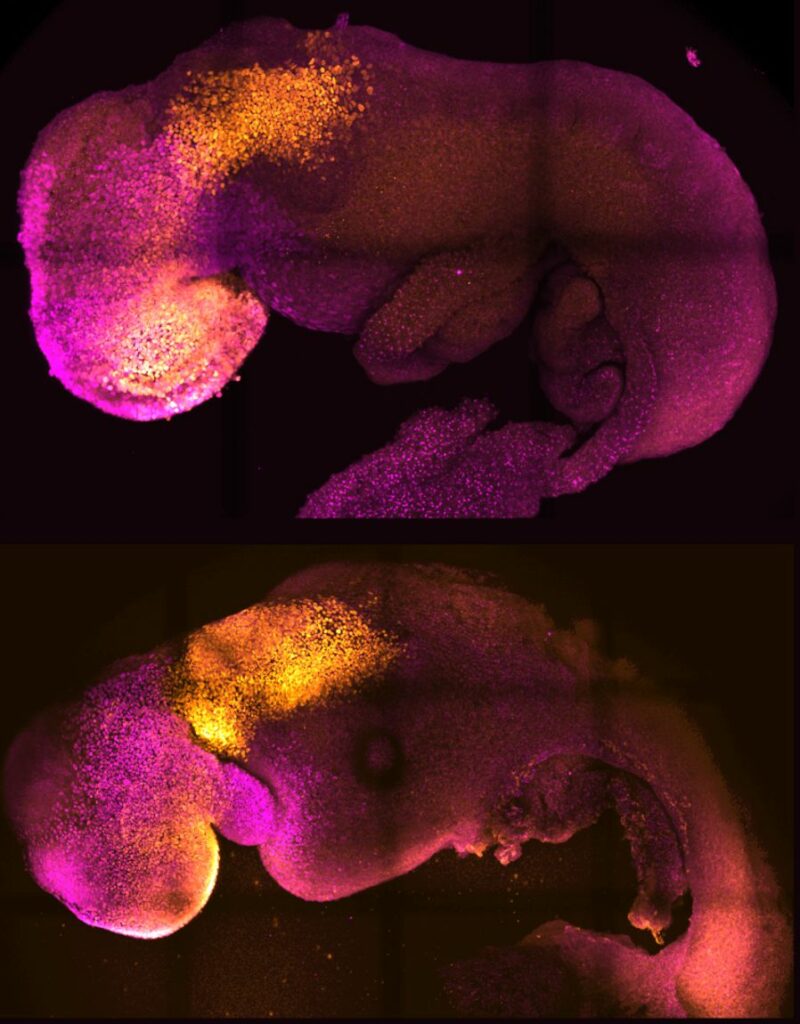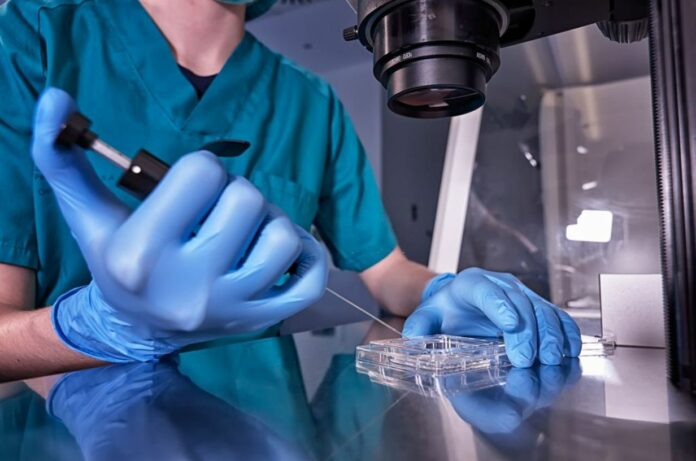This is the most advanced stage of development achieved to date in a stem cell-derived model without eggs or sperm.
A groundbreaking study has revealed a new embryo model made from stem cells that can develop into virtually every cell type in the body—including beating hearts.
Scientists at the University of Cambridge and the California Institute of Technology have used stem cells—the body’s master cells that can develop into practically any cell type in the body—to make model mouse embryos with beating hearts, brain tissue, and the basis for all of the mouse’s other organs.
The findings, which represent the result of more than a decade of research, may provide light on why some embryos fail to develop into fetuses while others do so as part of a successful pregnancy. The outcomes could also be utilized to direct the production and repair of artificial human organs for transplantation.
Magdalena Zernicka-Goetz, a Bren Professor of Biology and Biological Engineering at Caltech, oversees the lab where the study was carried out. In Cambridge’s Department of Physiology, Development, and Neuroscience, Zernicka-Goetz also holds the positions of professor of mammalian development and stem cell biology. The breakthrough is described in a study published in Nature today.
The model of an embryo was made without eggs or sperm. Instead, by directing the three different kinds of stem cells that are present in early mammalian development to the stage where they begin interacting, the researchers were able to replicate natural processes in the laboratory. Researchers were able to make stem cells “talk” to each other by increasing the expression of a specific set of genes and creating a specific environment for their interactions.

The stem cells self-organized into structures that advanced through various developmental stages until the synthetic embryos had beating hearts, brain precursors, and the yolk sac where the embryo develops and obtains nutrition during its initial weeks. This is the most developed stage that a model made from stem cells has reached so far.
The ability to generate the entire brain, particularly the anterior region, which has been a “holy grail” in the development of synthetic embryos, represents a significant advance in this study.
According to Zernicka-Goetz, “This opens new possibilities to study the mechanisms of neurodevelopment in an experimental model.”
“In fact, we demonstrate the proof of this principle in the paper by knocking out a gene already known to be essential for formation of the neural tube, precursor of the nervous system, and for brain and eye development. In the absence of this gene, the synthetic embryos show exactly the known defects in brain development as in an animal carrying this mutation. This means we can begin to apply this kind of approach to the many genes with unknown function in brain development.”
She continues, this new “mouse embryo model not only develops a brain, but also a beating heart, all the components that go on to make up the body.
She continues, this new “mouse embryo model not only develops a brain, but also a beating heart, all the components that go on to make up the body.
“It’s just unbelievable that we’ve gotten this far. This has been the dream of our community for years, and the major focus of our work for a decade, and finally we’ve done it.”
For a human embryo to grow and develop properly, the tissues that will become the embryo and the tissues that will connect the embryo to the mother need to speak to each other. Three different stem cell types begin to form within the first week of fertilization; one of these will eventually develop into the bodily tissues, while the other two will help the embryo’s growth. The placenta, which connects the fetus to the mother and supplies oxygen and nutrition, will be formed from one of these latter two types, which are referred to as extraembryonic stem cells. The other will develop into the yolk sac, which is where the embryo develops and gets its early nutrition.
Numerous pregnancies fail when the three types of stem cells begin exchanging mechanical and chemical signals that instruct the embryo on how to develop normally.
This early phase, according to Zernicka-Goetz, sets the foundation for everything else that follows throughout pregnancy. If something goes wrong, the pregnancy won’t succeed.
In order to understand why some pregnancies end in failure and others in success, Zernicka-team Goetz’s has been researching these early phases of pregnancy for the past ten years.
“The stem cell embryo model is important because it gives us accessibility to the developing structure at a stage that is normally hidden from us due to the implantation of the tiny embryo into the mother’s womb,” Zernicka-Goetz adds. “This accessibility allows us to manipulate genes to understand their developmental roles in a model experimental system.”
To guide the development of their synthetic embryo, the researchers combined cultured stem cells representing each of the three types of tissue and allowed them to grow in proportions and an environment conducive to their growth and communication with one another, ultimately leading to their self-assembly into an embryo.
The extraembryonic cells guide the growth of the embryo by sending chemical signals to the embryonic cells as well as mechanically, or through touch.
“This period of human life is so mysterious, so to be able to see how it happens in a dish—to have access to these individual stem cells, to understand why so many pregnancies fail and how we might be able to prevent that from happening—is quite special,” adds Zernicka-Goetz. “We looked at the dialogue that has to happen between the different types of stem cells at that time—we’ve shown how it occurs and how it can go wrong.”
Although the current study used mouse models, the researchers are currently working on a model that is comparable to human embryo development in order to understand the mechanisms underlying important processes that would otherwise be impossible to examine in actual embryos.
These techniques might also be applied to help produce synthetic organs for patients awaiting transplants if they are later proven effective with human stem cells.
“There are so many people around the world who wait for years for organ transplants,” adds Zernicka-Goetz. “What makes our work so exciting is that the knowledge coming out of it could be used to grow correct synthetic human organs to save lives that are currently lost. It should also be possible to affect and heal adult organs by using the knowledge we have on how they are made.”
Image Credit: Getty
You were reading: Breakthrough Study Shows A New Embryo Model That Not Only Develops Brain But Also Beating Heart
